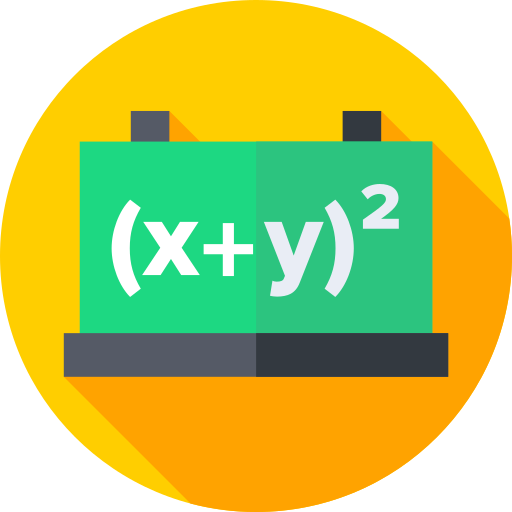Quants Menu
- HCF and LCM
- Number System
- Number Decimals & Fractions
- Surds and Indices
- Divisibility
- Ages
- LCM
- HCF
- Inverse
- Speed Time and Distance
- Work and Time
- Boats and Streams
- Pipes and Cisterns
- Averages
- Allegations and Mixtures
- Ratio and Proportions
- Simple & Compound Interest
- Simple Interest
- Compound Interest
- Percentages
- Profit & Loss
- Successive Discount 1
- Successive Discount 2
- AP GP HP
- Arithmetic Progressions
- Geometric Progressions
- Harmonic Progressions
- Probability
- Permutation & Combination
- Combination
- Circular Permutation
- Geometry
- Heights and Distances
- Perimeter Area and Volume
- Coordinate Geometry
- Venn Diagrams
- Set Theory
- Algebra
- Linear Equations
- Quadratic Equations
- Logarithms
- Clocks
- Calendars
- Clocks and Calendars
- Finding remainder of large powers
PREPINSTA PRIME
Formulas for Linear Equation Problems
Introduction to Formulas of Linear Equations
A linear equation is also known as an algebraic equation in which each term has an exponent of one. The graph representation of the equation shows a straight line. Standard form of linear equation is y = m x + b. Where, x is the variable and y, m, and b are the constants. On this page you will find complete Formulas for Linear Equation that will help you to solve questions of all levels.

Formulas & Definitions for Linear Equations
- A linear equation is an algebraic equation in which each term has an exponent of one and the graphing of the equation results in a straight line.
- Standard form of linear equation is y = mx + b. Where, x is the variable and y, m, and b are the constants.
Forms of Linear Equations
There are mainly 3 forms of Linear Equation :
- Standard Form
- Slope-Intercept Form
- Point-Slope Form
1. Standard Form
The standard form of a linear equation is typically written as:
Ax + By = C
Where:
- �A and �B are coefficients (constants) representing the coefficients of �x and �y terms, respectively.
- �C is a constant term.
The standard form requires that �A and �B are both integers and that �A is non-negative. Also, �A and �B should not have any common factors other than 1. This form is commonly used in algebraic manipulation and solving systems of linear equations.
2. Slope-Intercept Form
The slope-intercept form of a linear equation is written as:
y=mx+b
Where:
- �m is the slope of the line, representing the rate of change between �y and �x.
- �b is the y-intercept, which is the value of �y when �x is equal to 0. It represents the point where the line intersects the y-axis.
This form is particularly useful for graphing linear equations and quickly identifying the slope and y-intercept of the line.
3. Point-Slope Form
The point-slope form of a linear equation is given by:
y−y1=m(x−x1)
Where:
- �m is the slope of the line, as explained in the slope-intercept form.
- (�1,�1)(x1,y1) represents the coordinates of a point on the line.
This form is useful when you know a specific point on the line and its slope, allowing you to write the equation directly without having to calculate the y-intercept.
Linear equations in one variable
- A Linear Equation in one variable is defined as ax + b = 0
- Where, a and b are constant, a ≠ 0, and x is an unknown variable
- The solution of the equation ax + b = 0 is x = – \frac{b}{a} . We can also say that – \frac{b}{a} is the root of the linear equation ax + b = 0.
Linear equations in two variable
- A Linear Equation in two variables is defined as ax + by + c = 0
- Where a, b, and c are constants and also, both a and b ≠ 0
Linear equations in three variable
- A Linear Equation in three variables is defined as ax + by + cz = d
- Where a, b, c, and d are constants and also, a, b and c ≠ 0
Formulas and Methods to solve Linear equations
- Substitution Method
Step 1: Solve one of the equations either for x or y.
Step 2: Substitute the solution from step 1 into the other equation.
Step 3: Now solve this equation for the second variable.
- Elimination Method
Step 1: Multiply both the equations with such numbers to make the coefficients of one of the two unknowns numerically same.
Step 2: Subtract the second equation from the first equation.
Step 3: In either of the two equations, substitute the value of the unknown variable. So, by solving the equation, the value of the other unknown variable is obtained.
- Cross-Multiplication Method
Suppose there are two equation,
p_{1}x +q_{1}y = r_{1} ……..(1)
p_{2}x +q_{2}y = r_{2} ……..(2)
Multiply Equation (1) with p2
Multiply Equation (2) with p1
p_{1}p_{2}x +q_{1}p_{2}y = r_{1}p_{2}
p_{1}p_{2}x +p_{1}q_{2}y = p_{1}r_{2}
Subtracting,
q_{1}p_{2}y – p_{1}q_{2}y = r_{1}p_{2} – p_{1}r_{2}
or, y (q₁ p₂ – q₂p₁) = r₂p₁ – r₁p₂
Therefore, y = \frac{r_{2}p_{1} – r_{1}p_{2} }{q_{1}p_{2} – q_{2}p_{1} }
= \frac{r_{1}p_{2} – r_{2}p_{1} }{q_{2}p_{1} – q_{1}p_{2} }
where (p₁q₂ – p₂q₁) ≠ 0
Therefore, \frac{y}{r_{1}p_{2} – r_{2}p_{1} } = \frac{1}{q_{2}p_{1} – q_{1}p_{2} } …(3)
Multiply Equation (1) with q2
Multiply Equation (2) with q1
p_{1}q_{2}x +q_{1}q_{2}y = r_{1}q_{2}
q_{1}p_{2}x +q_{1}q_{2}y = q_{1}r_{2}
Subtracting,
p_{1}q_{2}x – p_{2}q_{1}x = r_{1}q_{2} – q_{1}r_{2}
or , x(p₁q₂ – p₂q₁) = (q₁r₂ – q₂r₁)
or, x = \frac{q_{1}r_{2} – r_{1}q_{2}}{p_{1}q_{2} – p_{2}q_{1}}
Therefore, \frac{x}{q_{1}r_{2} – r_{1}q_{2}} = \frac{1}{p_{1}q_{2} – p_{2}q_{1}} … (4)
where (p₁q₂ – p₂q₁) ≠ 0
From equations (3) and (4), we get,
\frac{x}{q_{1}r_{2} – r_{1}q_{2}} =\frac{y}{r_{1}p_{2} – p_{1}r_{2}} = \frac{1}{p_{1}q_{2} – p_{2}q_{1}}
where (p₁q₂ – p₂q₁) ≠ 0
Note: Shortcut to solve this equation will be written as
\frac{x}{q_{1}r_{2} – r_{1}q_{2}} =\frac{y}{r_{1}p_{2} – r_{2}p_{1} } = \frac{1}{q_{2}p_{1} – q_{1}p_{2} }
which means,
x = \frac{q_{1}r_{2} – r_{1}q_{2}}{q_{2}p_{1} – q_{1}p_{2} }
y = \frac{r_{1}p_{2} – r_{2}p_{1}}{q_{2}p_{1} – q_{1}p_{2}}
Important Formulas of Linear Equation & key points to Remember
- Suppose, there are two linear equations: a1x + b1y = c1 and a2x + b2y = c2
Then,
(A) If \frac{a_{1}}{a_{2}}=\frac{b_{1}}{b_{2}}, then there will be one solution, and the graphs will have intersecting lines.
(B) If\frac{a_{1}}{a_{2}}=\frac{b_{1}}{b_{2}} = \frac{c_{1}}{c_{2}}, then there will be numerous solutions, and the graphs will have coincident lines.
(C) If \frac{a_{1}}{a_{2}}=\frac{b_{1}}{b_{2}}≠ \frac{c_{1}}{c_{2}} then there will be no solution, and the graphs will have parallel lines.
Questions on Formulas of Linear Equation:
Question 1:
What is the slope-intercept form of the equation of a line?
a) y=mx+b
b) y=mx−b
c) y=bx+m
d) y=bx−m
Answer : (a)
Explanation:
The correct answer is (a). The slope-intercept form of a linear equation is y=mx+b, where m represents the slope and b represents the y-intercept.
Question 2:
Which form of a linear equation is useful when you know a specific point on the line and its slope?
a) Point-Slope Form
b) Slope-Intercept Form
c) Standard Form
d) None of the above
Answer: (a)
Explanation: The correct answer is (a). The point-slope form of a linear equation is written as y−y1=m(x−x1), where (1,1)(x1,y1) represents the coordinates of a point on the line, and m is the slope.
Question 3:
What does the standard form of a linear equation look like? a) y=mx+b
b) y=bx+m
c) Ax+By=C
d) Ax+By=D
Explanation: The correct answer is (c). The standard form of a linear equation is Ax+By=C, where A and B are coefficients representing the coefficients of x and y, respectively, and C is a constant term.
Question 4:
Which of the following is the correct representation of the point-slope form of a linear equation?
a) �=��+�y=mx+b
b) �−�1=�(�−�1)y−y1=m(x−x1)
c) �=��+��y=Ax+By
d) y=m1x+b
Explanation: The correct answer is (b). The point-slope form of a linear equation is represented as �−�1=�(�−�1)y−y1=m(x−x1), where (�1,�1)(x1,y1) represents the coordinates of a point on the line, and �m is the slope of the line. This form is useful when you know a specific point on the line and its slope.
Question 5:
How can you eliminate fractions from a linear equation?
a) Multiply both sides of the equation by a common denominator
b) Divide both sides of the equation by a common denominator
c) Add both sides of the equation by a common denominator
d) Subtract both sides of the equation by a common denominator
Explanation: The correct answer is (a). To eliminate fractions from a linear equation, multiply both sides of the equation by a common denominator. This process will clear the fractions and make the equation easier to solve.
Prime Course Trailer
Related Banners
Get PrepInsta Prime & get Access to all 200+ courses offered by PrepInsta in One Subscription
Also Check Out
Get over 200+ course One Subscription
Courses like AI/ML, Cloud Computing, Ethical Hacking, C, C++, Java, Python, DSA (All Languages), Competitive Coding (All Languages), TCS, Infosys, Wipro, Amazon, DBMS, SQL and others
- Algebra – Questions | Formulas | How to Solve Quickly | Tricks & Shortcuts
- Quadratic Equations – Questions | Formulas | How to Solve Quickly | Tricks & Shortcuts
- Algebra –
Questions |
Formulas |
How to Solve Quickly |
Tricks & Shortcuts - Quadratic Equations –
Questions |
Formulas |
How to Solve Quickly |
Tricks & Shortcuts

 Apply For Jobs
Apply For Jobs Get Hiring Updates
Get Hiring Updates




Login/Signup to comment